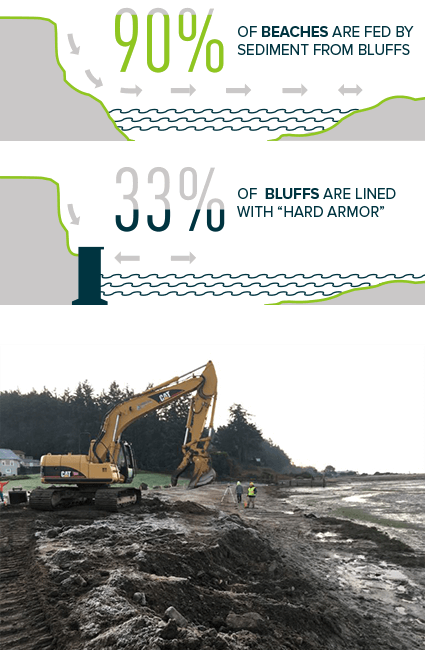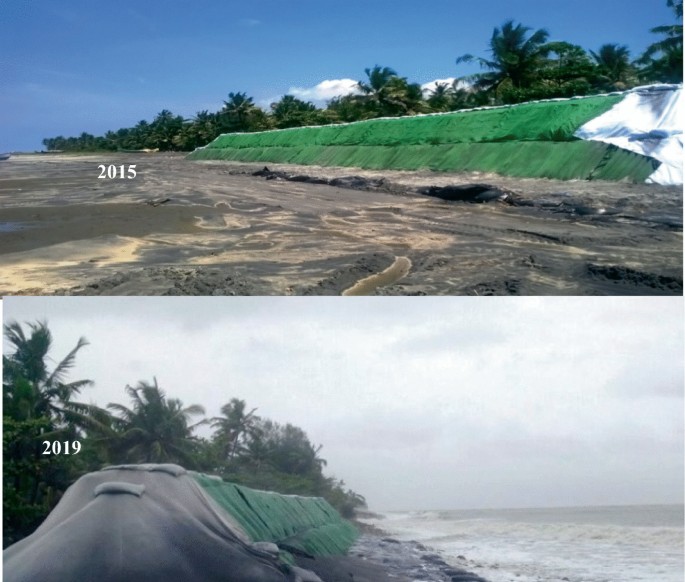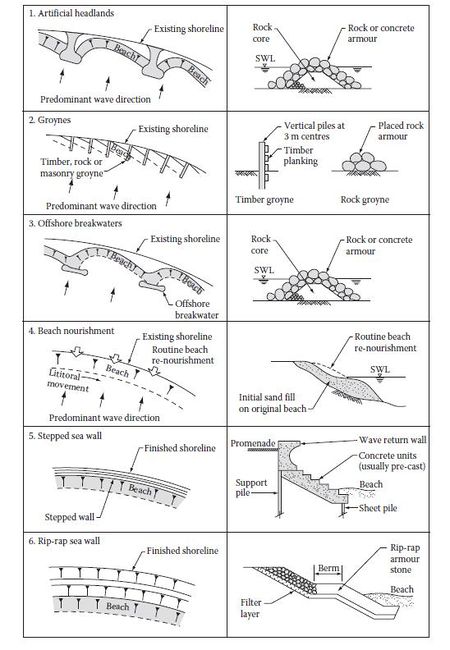The Basic Principles Of Shore Protect Team
Table of ContentsThe Greatest Guide To Shore Protect TeamShore Protect Team for BeginnersThe Of Shore Protect TeamShore Protect Team - An OverviewGetting My Shore Protect Team To WorkThe Of Shore Protect TeamThe Ultimate Guide To Shore Protect Team
Decline in building value: As the area tourism is impacted by disintegration, so then is the economic climate. Customers are less most likely to look for a beach residence that might be destroyed at any minute by the impending flooding and erosion emergency situation. Consequently, home value can drop tremendously and influence the whole region.Whether a beach is just tiny and crowded or needs to close completely for the safety of the ecosystem and neighboring residential properties, this greatly influences tourist. Consequently, neighborhood economic situations are impacted (https://hubpages.com/@shrprtcttm). Threat of injury: The boosted risk of flooding and structural failures creates a boosted threat of injury to close-by travelers and area participants

Coastline stabilization is straight related to their work. Waterside resorts: Since coastline disintegration influences tourism, it impacts the success of waterside resorts.
The Buzz on Shore Protect Team
Coastal commercial businesses: No visitors implies no organization. Coastal state parks: State parks that exist along coasts are at threat of damages.
Soft stabilization is a far better service for the setting and even more lasting overall. Difficult stabilization makes use of synthetic frameworks as defense to manage disintegration. Normally, these structures are installed at best angles or parallel to stop sand movement and reduce the force of waves. Many kinds of hard stablizing like seawalls and sheet metal are not excellent for shoreline stablizing.
Some Known Questions About Shore Protect Team.
There's likewise not enough evidence of their effectiveness depending upon the sort of coastline and local conditions. Tough stabilization methods often tend to be harder to set up and don't match the natural visual, standing out like an aching thumb and damaging regional ecosystems in many circumstances. Beach sustenance is the process of adding lost sand and sediment back to beaches after disintegration has happened.
TrapBags aid in the procedure of beach nourishment by securing natural ecosystems and allowing plants to grow. While this process can be costly and is not permanent, the pros tend to exceed the disadvantages. TrapBag obstacles deal lots of residential properties that make them excellent for coastal and shore erosion defense. They're: Eco-friendly: You can make use of indigenous dirt both to border and to load the TrapBags.

The smart Trick of Shore Protect Team That Nobody is Discussing
Easy to mount: Relieve of installation suggests TrapBags can be released promptly in the occasion of an emergency. They can also be mounted without any kind of heavy equipment. Affordable: TrapBags are excellent for both little and large locations of shoreline. They offer a budget-friendly option to cover jobs of any size.
Incorporated with a high construction expense, this has brought about enhancing use of other soft engineering seaside monitoring options such as coastline replenishment. Seawalls are constructed from various materials, the majority of generally enhanced concrete, stones, steel, or gabions. Other feasible building and construction products include plastic, timber, aluminum, fiberglass composite, and biodegradable sandbags made from hemp and coir. The suitable seawall layout relies upon location-specific facets, including bordering erosion procedures. There are 3 main sorts of seawalls: upright, curved, tipped, and mounds (see table below). A record released by the United Nations Setting Programme (UNEP) recommends that the tsunami of 26 December 2004 created much less damages in the locations where all-natural obstacles were existing, such as mangroves, reef or seaside greenery.
Natural obstacles, such as coral reefs and mangrove forests, prevent the spread of tsunamis and the circulation of coastal waters and reduced the flood and surge of water. A cost-benefit strategy is an effective means to identify whether a seawall is ideal and whether the benefits deserve the expense.
See This Report about Shore Protect Team
A seawall is a fixed attribute which can clash with the vibrant nature of the coastline and hinder the exchange of sediment in between land and sea. Benefits and downsides of seawalls according to Short (1999) Advantages Drawbacks Long term solution in contrast to soft beach sustenance (https://replit.com/@shoreprotecttea).

This can trigger coastlines to dissipate, providing them ineffective for beach goers. Generally, seawalls can be an effective way to regulate seaside disintegration, but just if they are constructed well and out of materials that can stand up to the pressure of recurring wave power. Some understanding is needed of the coastal procedures and morphodynamics specific to the seawall place.
The 4-Minute Rule for Shore Protect Team
Integrated with a high building price, this has brought about raising use of various other soft engineering coastal monitoring alternatives such as beach replenishment. Seawalls are built from numerous products, a lot of commonly strengthened concrete, boulders, steel, or gabions. Various other feasible building and construction products consist of plastic, wood, light weight aluminum, fiberglass composite, and eco-friendly sandbags made from hemp and coir. The suitable seawall design depends on location-specific aspects, consisting of bordering disintegration procedures. There are 3 main kinds of seawalls: vertical, rounded, tipped, and mounds (see table listed below). A record released by the United Nations Atmosphere Programme (UNEP) recommends that the tidal wave of 26 December 2004 created much less damage in the areas where natural barriers were existing, such as mangroves, reef or coastal plants.
Natural obstacles, such as coral reefs and mangrove forests, protect against the spread of tsunamis and the circulation of coastal waters and minimized the flood and surge of water. A cost-benefit strategy is an efficient method to establish whether a seawall is suitable and whether the benefits are worth the expense.
Our Shore Protect Team PDFs
A seawall is a static function which can contrast with the vibrant nature of the shore and impede the exchange of sediment between land and sea. Benefits and negative aspects of seawalls according to Short (1999) Benefits Downsides Lengthy term option in contrast to soft coastline nutrients.

This can cause beaches to dissipate, providing them useless for beach goers. Typically, seawalls can be a successful means to control coastal disintegration, however just if they are constructed well and out of products that can hold up against the force of continuous wave power.